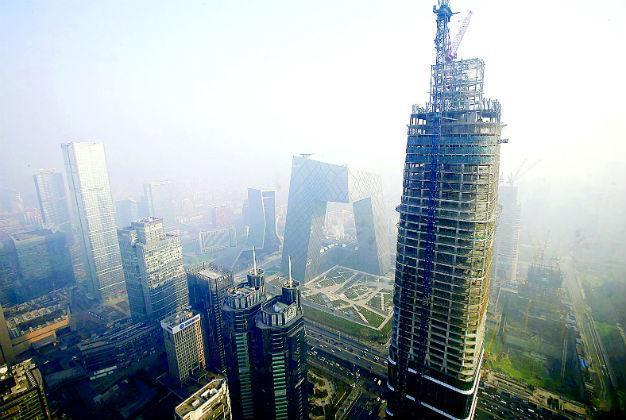Beijing to raise threshold for issuing air pollution ‘red alerts’
BEIJING – Reuters

REUTERS photo
Beijing is to raise the thresholds for issuing its highest air pollution warnings, the state news agency Xinhua reported on Feb. 22, two months after acrid smog triggered the city’s first ever “red alerts.”
In future, the highest alert will only be issued when the daily average air quality index (AQI) is forecast to exceed 500 for a day, 300 for two days in a row or 200 for four days, Xinhua reported, citing Beijing’s environmental protection bureau.
At present, a red alert is issued when the AQI is forecast to exceed 200, a level the United States deems “very unhealthy,” for at least three days.
Schools were closed and outdoor construction work was suspended when thick smog prompted Beijing to issued its first red alert last December.
The new criteria take effect at the end of March and are designed to standardize pollution alerts across Beijing, the neighboring port city of Tianjin and four cities in the surrounding Hebei province, Xinhua reported.
Liu Wei, deputy head of the emergency response office at the environmental protection bureau, said this would in effect tighten the pollution controls for the outlying regions, according to Xinhua.
Pollution is a sensitive topic in China, with thousands of protests sparked every year by concerns about environmental degradation.
Environmental officials admit that China is unlikely to meet the air quality standards set by the state until at least 2030.
Beijing, one of China’s most polluted cities, last month announced it would close 2,500 small highly-polluting firms this year.
It also plans to develop a network of ventilation “corridors” to help disperse smog, Xinhua reported on Feb. 21.
Construction in the zones, which will be created by connecting parks, rivers, lakes, highways and low building blocks, will be strictly controlled and obstacles to air flow will be removed over time, Xinhua cited Wang Fei, deputy head of Beijing’s urban planning committee, as saying.
There will be five large corridors that will be more than 500 meters wide and several smaller ones, the report said, without giving a time frame for the project.
